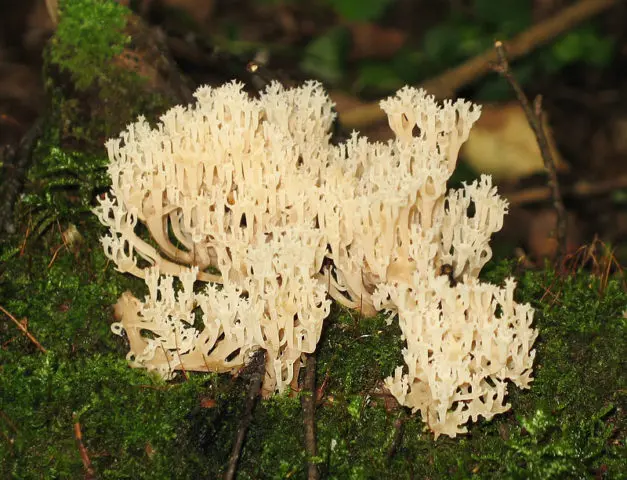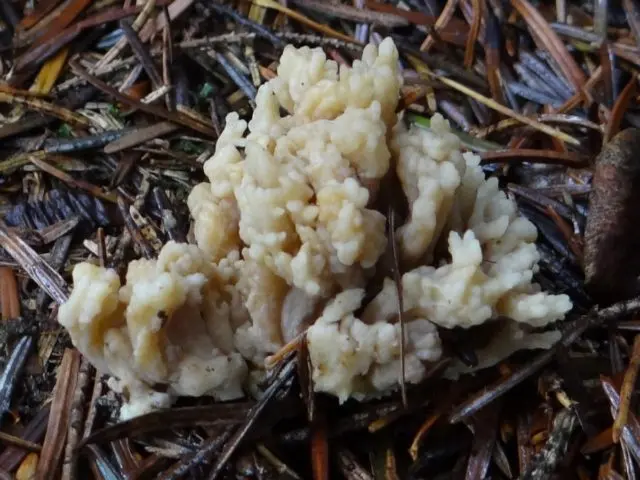Contents
Comb hornwort is a very beautiful mushroom of the Clavulinaceae family, Clavulina genus. Due to its unusual appearance, this specimen is also called coral clavulina.

Where do comb horns grow
Clavulina coral is a fairly common fungus, covering the continents of Eurasia and North America. It grows everywhere in Our Country. Most often you can meet the species in mixed, coniferous and less often deciduous forests. Often it is located on rotting woody debris, fallen leaves, or areas heavily overgrown with grass. Sometimes grows in shrub areas outside the forest.
Clavulina coralline can grow singly, and under favorable conditions – in large groups, annular or, forming bundles and having a considerable size.
Fruiting – from the second half of summer (July) to mid-autumn (October). The peak is in August-September. Fruits abundantly every year, is not rare.
What do clavulins look like?
This is a very amazing mushroom, which differs from other varieties in its special structure. Its fruiting body has a branched structure with a clearly visible mushroom leg.
In height, the fruiting body varies from 3 to 5 cm. In its shape it resembles a bush with branches growing almost parallel to each other, and with small points, where flat tops of gray, almost black color are visible at the ends.
The fruit body has a light color, white or cream, but you can find specimens with a yellow and fawn tint. The spore powder is white, the spores themselves are broadly elliptical in shape with a smooth surface.
The leg is dense, small in height, most often no more than 2 cm, and also 1-2 cm in diameter. Its color corresponds to the fruiting body. The pulp on the cut is white, rather fragile and soft, without a certain smell. It has no taste when fresh.

Is it possible to eat comb horns
In fact, comb hornwort is almost never used in cooking because of its low gastronomic qualities. Therefore, in many sources it is noted that this mushroom belongs to a number of inedible ones. It has a bitter taste.
How to distinguish staghorn clavulins
The comb hornworm is distinguished by a light color, closer to white or milky, as well as flat, comb-shaped branches pointed at the ends.
The most similar mushroom is wrinkled clavulina, since it also has a white color, but unlike the coral-shaped ends of its branches, it is rounded. Refers to conditionally edible varieties.

Conclusion
Comb hornwort is a rather interesting representative of the mushroom kingdom, but, despite its beautiful appearance, this specimen is deprived of taste qualities. That is why mushroom pickers do not dare to collect this species, and practically do not eat it.









